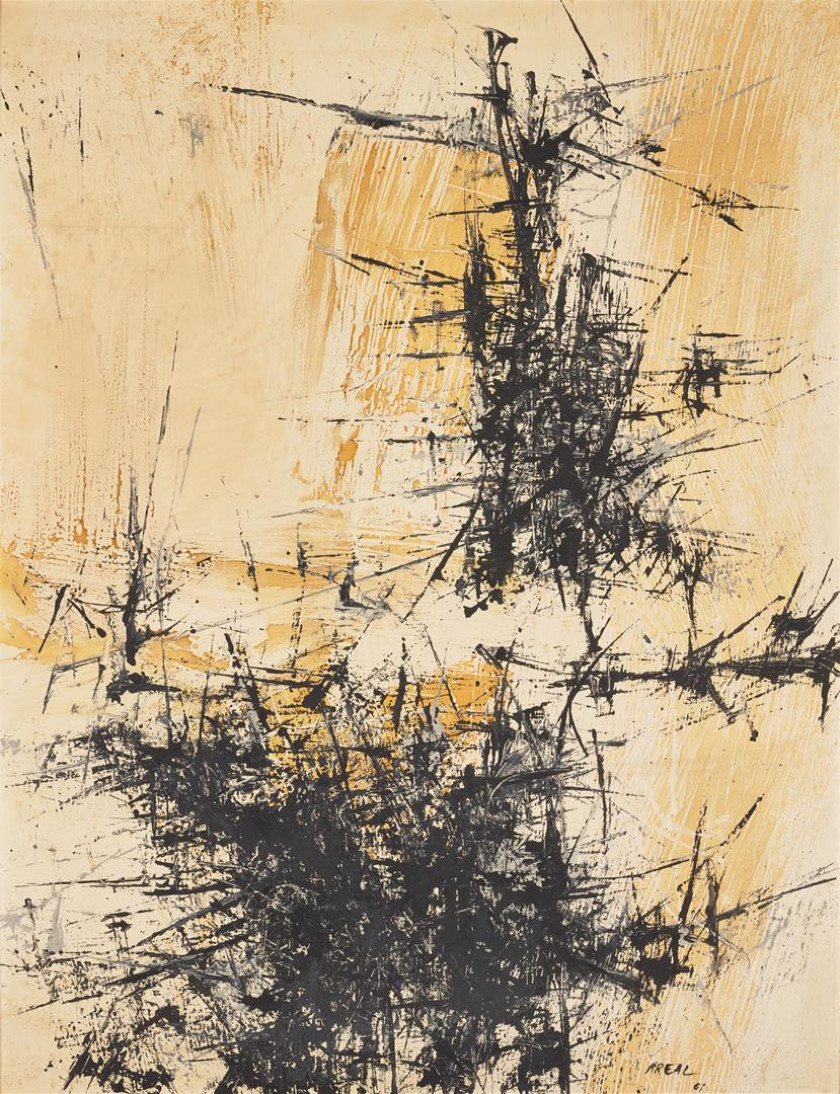OP. II - 16
painting


1961
Oil on platex
- 115,5 x 89 cm127 x 100,5 cm
António Areal (1934-1978), a self-taught artist, explored various artistic languages, combining his artistic proposals with intense theoretical reflection. He began his career in the 1950s close to the surrealists, in a national context then still dominated by the debate between the latter and the neo-realists. He evolved in the 1960s into a language that crossed references from French Informalism with North American Abstract Expressionism - a phase in which this work is inserted. Later, he would approach languages close to pop art and nouveau réalisme, paving the way for future conceptual developments.
Opus II - 16 dates from the period when Areal was awarded a grant by the Calouste Gulbenkian Foundation (1960-61), with which he left for São Paulo, where he lived until 1962. The use of a restricted chromatic palette helps to focus attention on the gesturalism that structures the painting, in which we perceive the trace of white on ochre and the spatula application of black. It is this gesture that progressively choreographs the structuring of space in the abstract work, giving up any perspective illusionism and concentrating on the work of the three colours to build levels of depth. Ochre and white, not relinquishing themselves their gesture and texture, allow the shattered forms of black to emerge, in formations that find their way through the imperatives of composition in controlled explosions.
Compared to other works in the same series, where a gestural agitation rules, in this work the movement is contained in an elegant calligraphy of shards.
In Opus II - 16 the gesture becomes a sign and the form is the traceable index of an act.
Luísa Cardoso